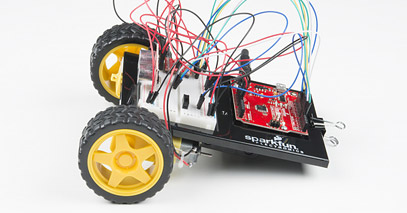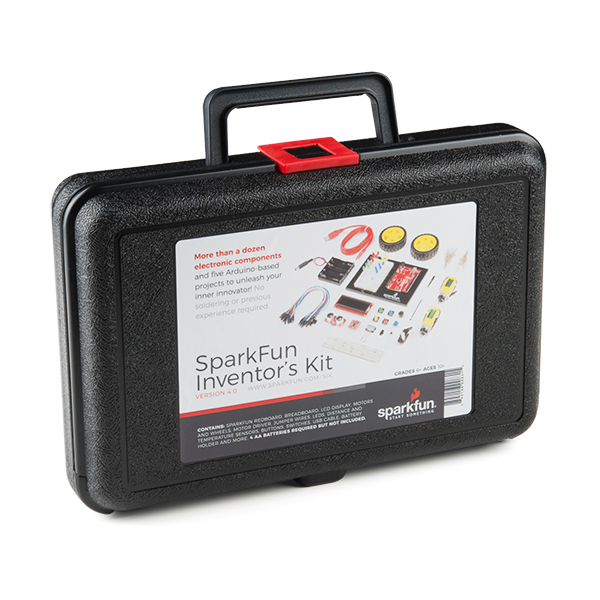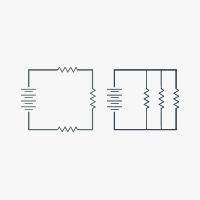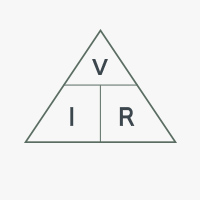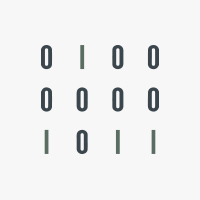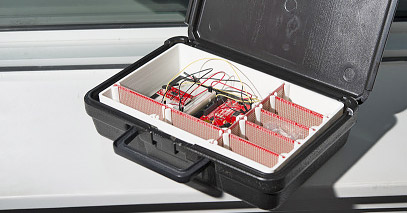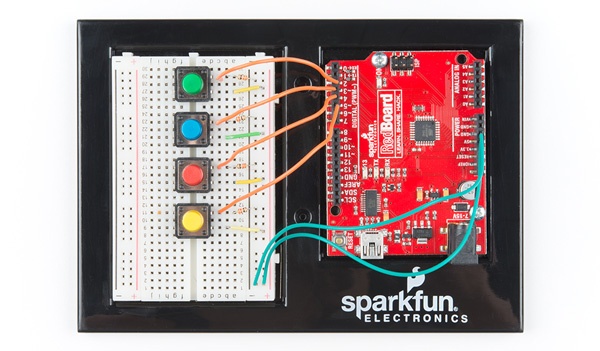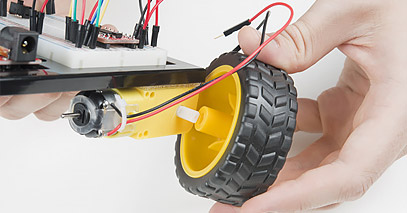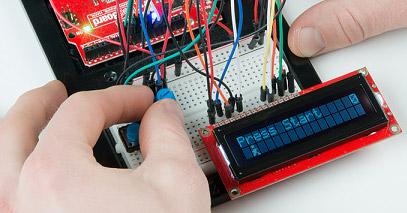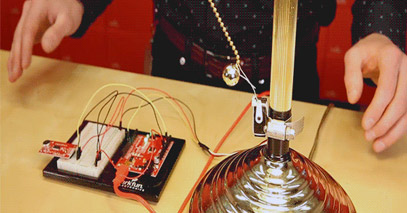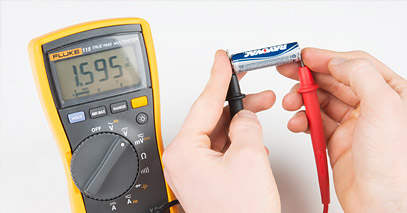Teach physical computing through project-based lessons using Arduino.
Project-Based Lesson Design
The SparkFun Inventor’s Kit is divided into five major projects, or units, encompassing 16 circuits that progress in difficulty as new STEM concepts and components are introduced. Students will build games, alarms, sensors and an autonomous robot as they work through the guidebook.
Access to Qwiic Ecosytem
Once students are ready to move beyond the components found in the SparkFun Inventor's Kit, the included RedBoard Qwiic makes it easy to expand learning to one of the more than 30 sensors and accessory boards available within the Qwiic Connect System.
Coding Challenges
At the end of each circuit, ideas for modifying the code or circuit are provided to extend students’ learning and fuel ongoing innovation.
Breadboard-Friendly Components
The SparkFun Inventor’s Kit includes breadboard-friendly components to make circuit building even easier for those just getting started. Because no soldering is required to build circuits, all parts are reusable.
Robotics Ready
Two wheels and a pair of gearmotors enable students to create their own robots - starting with remote-controlled and moving into autonomous robots.
Limitless Possibilities
The components included in the SparkFun Inventor’s Kit can be combined in almost limitless ways to extend learning beyond just the circuits and projects in the guidebook.
The amount of opportunity with this kit is ridiculous (in a good way). There is so much the kids can learn and so many projects they can do with this kit.
Semester or year-long EE course for high school.
The 16-week course contains lectures, workshops and design projects that will introduce students to key engineering skills. The SparkFun Inventor’s Kit v4.1 Curriculum includes instructor resources such as a syllabus, worksheets, sample code, quizzes, glossary and more.
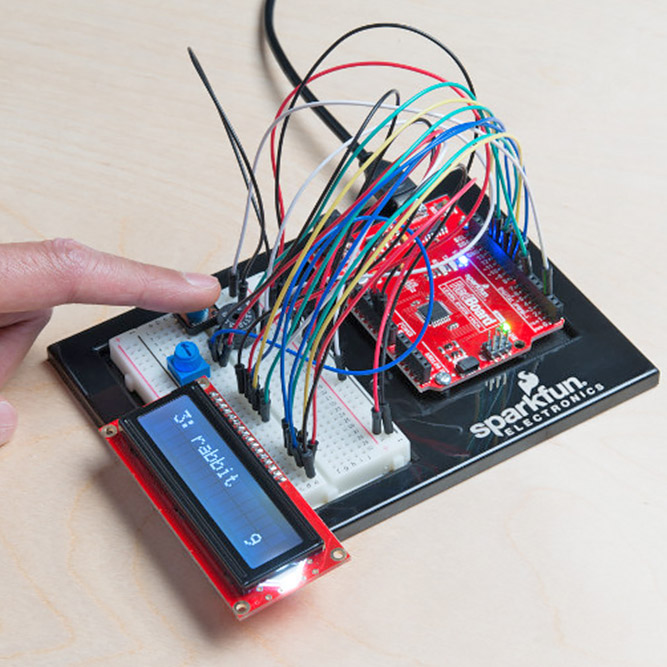
Teaches Physical Computing - Combining Hardware and Software
By focusing on both the hardware and software sides of circuit building, students gain the big-picture view of what it takes to create an electronics project and are better prepared to enter the workforce of the future. An understanding of electronics is a core literacy that opens up a world of opportunities in the fields of robotics, Internet of Things (IoT), engineering, fashion, medical industries, environmental sciences, performing arts and more and can be found in a number of CSTA and NGSS standards.
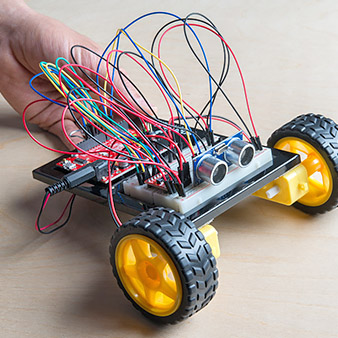
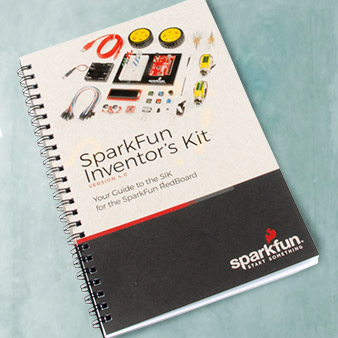
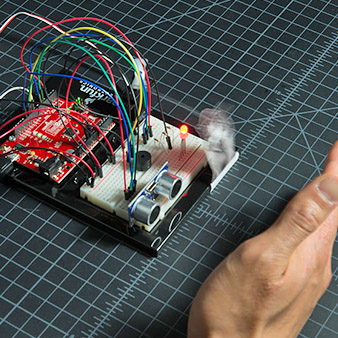
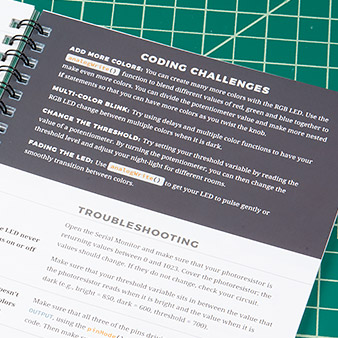
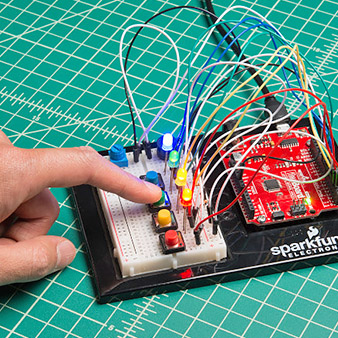
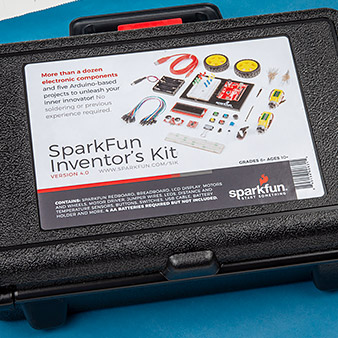
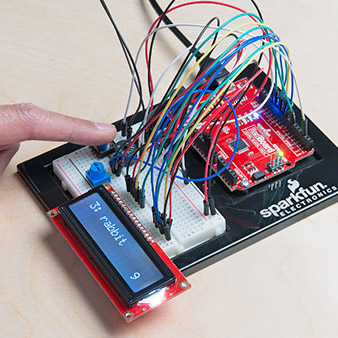
Resources
